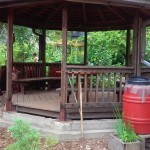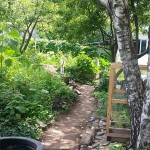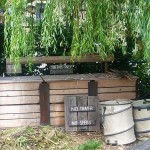Viewpoints
Community Members Fight for Gardens
In the middle of New York City, on the corner of 9th street and Avenue B exists a garden oasis, filled with chickens, turtles, frogs and small fish swimming peacefully in a pond. Next to the pond, are rows of growing vegetables, including collard greens and pumpkins. Murals cover the walls and benches line the corners.
This garden, appropriately named the 9th street community garden, is one of 39 community gardens in the Lower East Side.
“People come here with their kids and enjoy the garden,” says garden volunteer Derrick Alford. “This community garden hosts all kinds of performances.”
Kathleen Moore, a frequent at the garden enjoys the serenity of the garden. “I love coming here in the morning, its very calming.”
However the lack of housing in the Lower East Side poses a threat to the local community gardens, as property owners have fought to convert the lots into rental apartments.
During 1970’s, landowners in New York abandoned empty lots because they wouldn’t sell. Community members then illegally inhabited the lots and converted them into community gardens that housed flowers and vegetation.
“I think people know rights for people [citizens], but they don’t understand rights for space” says BIll Di Paolo, a co-director for the Museum of Reclaimed Urban Space. “No one really owns the land.”
However, some community members don’t think the community gardens are that useful.
“I like what it stands for, helping the community is a good idea, but the smell is pretty bad,” says Carlos Mendoza, a local construction worker. The community gardens use manure as natural fertilizer which can have a distinct smell. Community gardens are also filled with rats that are attracted to the vegetation.
Others in the community believe that the community gardens can best serve the neighborhood as land for the construction of new housing. “Everywhere you turn there’s a garden. The area doesn’t need that [many] gardens,” said Justin, a local apartment owner who didn’t want to give his last name. He said the gardens should be used for affordable housing, in order to help keep the neighborhood affordable for new tenants.
Those who support the viability of the community gardens have been working to raise awareness. A local museum has organized tours that showcase the importance of the gardens to the Lower East Side community.
“They don’t get that much representation. We’re trying to give community gardens more status,” says Bill DiPaolo, the co-director of the Museum of Reclaimed Urban Space. In addition to these tours, his museum holds local workshops that teach community members self sufficiency projects, such as recycling, composting and growing food.
Supporters also argue that community gardens benefit low income areas because they can be used to grow affordable produce that is available to the community.
The fight to preserve the local community gardens in the East Village has gotten intense. Many supporters have gotten arrested in their efforts to prevent the local gardens from being demolished.
“I don’t know what the future holds,” says Bill DiPaolo, but he says with the rise in residential construction, the fate of the gardens are in the hands of the local activists.












